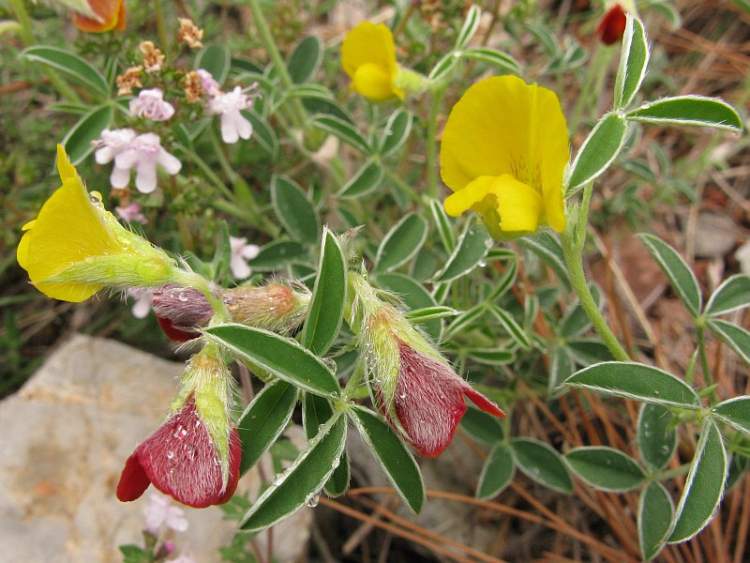Argyrolobium trigonelloides: Red Data Book of Armenia

EN B 1 ab(i,ii,iii,iv) + 2 ab(i,ii,iii,iv)
Category. Endangered species. Only one sub–population is known. The extent of occurrence and area of occupancy are less than 500 km2. The species grows in the area of intensive land development. It was not included in the first edition of the Red Data Book of Armenia. It is not included in the Annexes of CITES and that of the Bern Convention.
Description. Small perennial herbs with numerous decumbent stems 5–20 cm. Leaves ternate; leaflets cuneate–obovate, 7–20 x 4–15 mm, pubescent on the both sides, glaucous. Racemes 2–5–flowered. Corolla yellowish–pink. Legumes widely linear, compressed, 14–30 mm long.
Distribution. In Armenia it occurs in Meghri (surroundings of Meghri, villages Agarak, Shvanidzor, Nyuvadi) floristic region. EOO is 105 km2, AOO is 28 km2, the number of location is 2. Besides Armenia the general area of distribution includes Nakhichevan, North–West and Central Iran.
Ecological, biological and phytocoenological peculiarities. This is a perennial plant, though flowering starting in the first year of life. Grows in lower mountain belt, at the altitudes of 500–950 meters above sea level, on dry, stony slopes, between the ground bolders of the river, among phryganoid vegetation. Flowering from April to June, fruiting from May to June, rarely in September.
Limiting factors. Loss/degradation of habitats caused by expansions of arable lands and mining industry.
Conservation actions. No conservation actions. Necessary: establishment of new specially protected nature area in the surroundings of the village Agarak in Meghri region, monitoring of the population state.
Suggestions
 The Ministry of Environment sent a letter international partners to draw their attention to the real danger of environmental disasters as a result of Azerbaijan's large-scale aggression towards the territory of Armenia
The Ministry of Environment sent a letter international partners to draw their attention to the real danger of environmental disasters as a result of Azerbaijan's large-scale aggression towards the territory of Armenia
 Vicia pisiformis: Red Data Book of Armenia
Vicia pisiformis: Red Data Book of Armenia
 Vavilovia formosa: Red Data Book of Armenia
Vavilovia formosa: Red Data Book of Armenia
 Trigonella capitata: Red Data Book of Armenia
Trigonella capitata: Red Data Book of Armenia
 Trigonella astroides: Red Data Book of Armenia
Trigonella astroides: Red Data Book of Armenia












